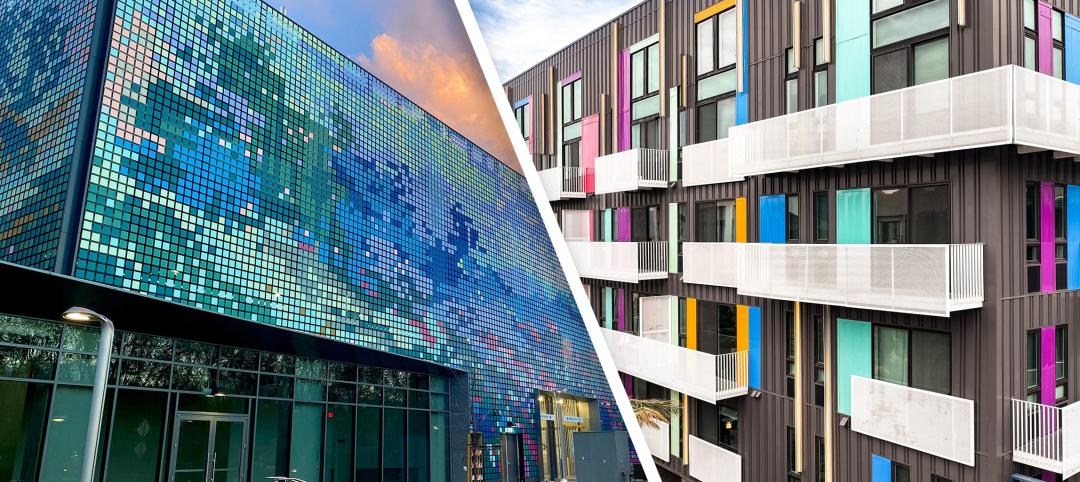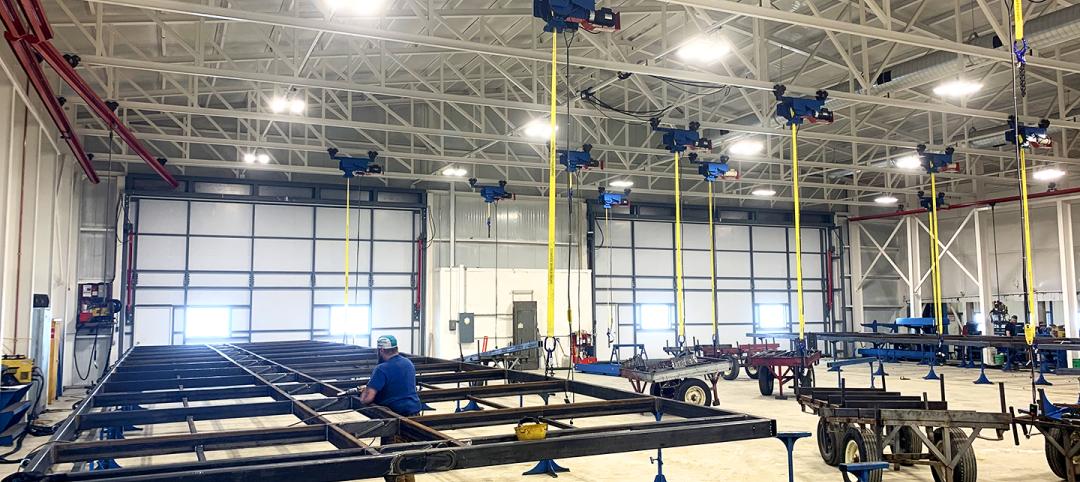The U.S. Department of Energy launched the American-Made Building Envelope Innovation Prize—Secondary Glazing Systems. The program will offer up to $2 million to encourage production of high-performance, cost-effective commercial windows.
The inaugural Building Envelope Innovation Prize targets novel solutions for commercial window upgrades to enable equitable decarbonization and optimize building envelopes for electrification, according to a DOE news release.
Secondary glazing involves installing an additional windowpane on an existing window to improve insulation.
“About 40% of U.S. commercial buildings, including multifamily residences, have single-pane windows, which are uncomfortable for occupants and waste energy,” says Jeff Marootian, principal deputy assistant secretary for energy efficiency and renewable energy. “Yet less than 1% of commercial buildings get full window replacements each year because it is so expensive and disruptive for occupants. Secondary glazing systems can help solve this problem.”
“While secondary glazing systems currently exist, they are a small portion of the market and are not widely adopted, despite costing markedly less than a full window replacement,” says Marc LaFrance, windows technology manager for DOE’s Building Technologies Office. “This prize will improve equitable access to efficient retrofit technologies by reducing product and installation costs.”
Here are more details from DOE:
Secondary glazing systems currently on the market can improve energy efficiency without needing to remove existing windows, but the potential of this technology has not been fully realized. The goal of this prize is to spur development of next-generation secondary windows that increase building resilience and comfort and decrease energy consumption—all while being highly cost-effective.
Improved window energy efficiency will lead to more attainable building electrification, as smaller heat pumps will be able to serve the building’s reduced energy needs. The Building Envelope Innovation Prize aims to fund development of promising, cost-effective, market-ready secondary glazing system solutions across three phases:
Phase 1: Design Concept—$50,000 | February 14 to June 13, 2024
- Teams will provide an innovative concept narrative and design drawings for a secondary glazing system prototype, including details on cost and energy performance.
- Up to five semifinalists will be selected, each receiving $50,000.
- Phase 1 awards will be based on energy and technical performance modeling, cost metrics, and construction plans.
- Teams can only join during Phase 1
Phase 2: Prototype—$200,000 | September 2024 to March 2025
- Semifinalist teams selected from Phase 1 will submit a secondary glazing system prototype and technical narrative as well as secure an equity-focused pilot demonstration partner.
- Phase 2 focus areas will include market readiness, cost-effectiveness, and the ability to be deployed.
- Up to three finalists will be selected, each receiving $200,000.
- Phase 2 awards will be based on prototype construction, as well as thermal and optical performance tests run by a national laboratory.
Phase 3: Commercialization—$750,000 | May 2025 to May 2026
- Finalist teams selected from Phase 2 will work with their equity-focused pilot demonstration partners and submit plans for commercialization.
- Phase 3 will focus on commercial viability—including price point, ease of installation, etc.
- Up to two winners will be selected. First place will receive $750,000; second place will receive $400,000.
- Phase 3 awards will be based on prototype durability testing results, rigor of commercialization plans, and implementation of equity-focused pilot demonstrations in low-income multifamily or underserved public sector buildings.
The Design Concept phase will accept applications of innovative secondary glazing system designs through June 13, 2024. All interested applicants must join by that date; Phase 2 and Phase 3 will not accept new competitors.
Related Stories
Products and Materials | Sep 29, 2023
Top building products for September 2023
BD+C Editors break down 15 of the top building products this month, from smart light switches to glass wall systems.
Standards | Sep 25, 2023
Updated specification for PVC exterior profiles on windows, doors, and skylights
The Fenestration and Glazing Industry Alliance (FGIA) updated a specification establishing minimum requirements for Polyvinyl Chloride (PVC) exterior profiles that are used in windows, doors, and skylights.
Products and Materials | Aug 31, 2023
Top building products for August 2023
BD+C Editors break down 15 of the top building products this month, from frameless windscreens to smart fixture mount sensors.
Windows and Doors | Aug 31, 2023
Updated specification rates ability of windows, doors, skylights, sliding glass doors to withstand impacts from windborne debris
The Fenestration and Glazing Industry Alliance (FGIA) updated a specification providing a system for rating the ability of windows, doors, skylights and sliding glass doors to withstand impact and pressure cycling generally associated with hurricane conditions.
Sponsored | | Jul 12, 2023
Keyless Security for Medical Offices
Keeping patient data secure is a serious concern for medical professionals. Traditional lock-and-key systems do very little to help manage this problem, and create additional issues of their own. “Fortunately, wireless access control — a keyless alternative — eliminates the need for traditional physical keys while providing a higher level of security and centralized control,” says Cliff Brady, Salto Director of Industry Sectors Engagement, North America. Let’s explore how that works.
Green | Jun 26, 2023
Federal government will spend $30 million on novel green building technologies
The U.S. General Services Administration (GSA), and the U.S. Department of Energy (DOE) will invest $30 million from the Inflation Reduction Act to increase the sustainability of federal buildings by testing novel technologies. The vehicle for that effort, the Green Proving Ground (GPG) program, will invest in American-made technologies to help increase federal electric vehicle supply equipment, protect air quality, reduce climate pollution, and enhance building performance.
Sponsored | | Jun 14, 2023
Wireless Door Access for Retail: Keys-as-a-Service
Most people have probably heard of software-as-a-service (SaaS) by now, but what about keys-as-a-service (KS)? This new technology is a game-changer for retail businesses.
Windows and Doors | Apr 4, 2023
Schweiss Doors erects manufacturing building to showcase new doors
Schweiss Doors, the premier manufacturer of hydraulic and bifold liftstrap doors, erected a new manufacturing facility which will also serve as a showcase for the company’s new “free-standing” header frames.
Windows and Doors | Mar 5, 2023
2022 North American Fenestration Standard released
The 2022 edition of AAMA/WDMA/CSA 101/I.S.2/A440, “North American Fenestration Standard/Specification for windows, doors, and skylights” (NAFS) has been published. The updated 2022 standard replaces the 2017 edition, part of a continued evolution of the standard to improve harmonization across North America, according to a news release.
AEC Innovators | Feb 28, 2023
Meet the 'urban miner' who is rethinking how we deconstruct and reuse buildings
New Horizon Urban Mining, a demolition firm in the Netherlands, has hitched its business model to construction materials recycling. It's plan: deconstruct buildings and infrastructure and sell the building products for reuse in new construction. New Horizon and its Founder Michel Baars have been named 2023 AEC Innovators by Building Design+Construction editors.

















